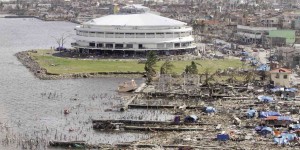Rehab, recovery ‘Yolanda’ aid focus

The Department of Social Welfare and Development will now focus on recovery and rehabilitation in the areas hit by Super Typhoon Yolanda last year, DSWD Secretary Corazon Soliman said in a statement. RAFFY LERMA
MANILA, Philippines–The Department of Social Welfare and Development (DSWD) will now focus on recovery and rehabilitation in the areas hit by Super Typhoon Yolanda last year.
In a statement, Social Welfare Secretary Corazon Soliman said the initial relief and humanitarian phase would now give way to medium- and long-term interventions under the recovery and rehabilitation phase for the displaced population.
The renewed efforts will be spearheaded by the Office of the Presidential Assistant for Rehabilitation and Recovery (Oparr) led by Secretary Panfilo Lacson.
Soliman made the announcement at the 6th Inter-Cluster Coordination Meeting of the Philippine government and the Humanitarian Country Team, chaired by the DSWD and cochaired by the United Nations resident coordinator and UN Development Program country director Luiza Carvalho.
Also present at the meeting were Lacson, Office of Civil Defense Director Romeo Fajardo and representatives of government and UN agencies and international nongovernment organizations.
Article continues after this advertisementThe DSWD thanked the members of the cluster for their work in the disaster response.
Article continues after this advertisement“We hope that we shall continue to be partners now that we are focusing on the rehabilitation of Yolanda-affected areas,” Soliman said.
Regular coordination meetings of the cluster will be managed by the Oparr.
Lacson said all rehabilitation initiatives of the six Yolanda-hit regions must focus on pre-Yolanda data to serve as a guide in building better communities.
Carvalho vowed continued UN support for the government’s rehabilitation effort, saying the organization will explore ways to support and collaborate with the Oparr.
During the meeting, the DSWD highlighted the efforts of the various clusters under the disaster response pillar. Among these are the Philippine approach to total sanitation working toward zero open defecation and the ongoing cash for assets rebuilding program in Eastern Visayas, which has 181,000 beneficiaries.
In addition, the food security cluster reported on its seeds and seedlings for planting and hand tools. The shelter cluster has provided shelter support to 81,994 families, with 3,000 families still in tents soon to be transferred to safer homes.
For their part, the education and health clusters are focused on the repair and rehabilitation of education and health facilities.–Julie M. Aurelio